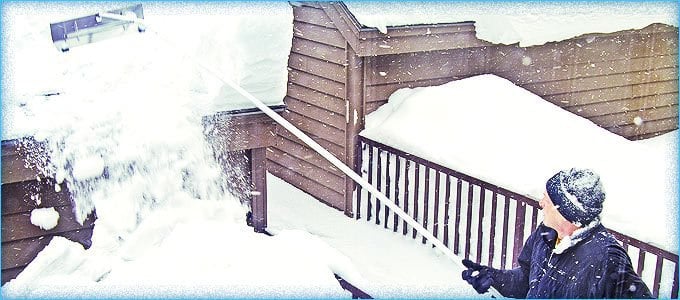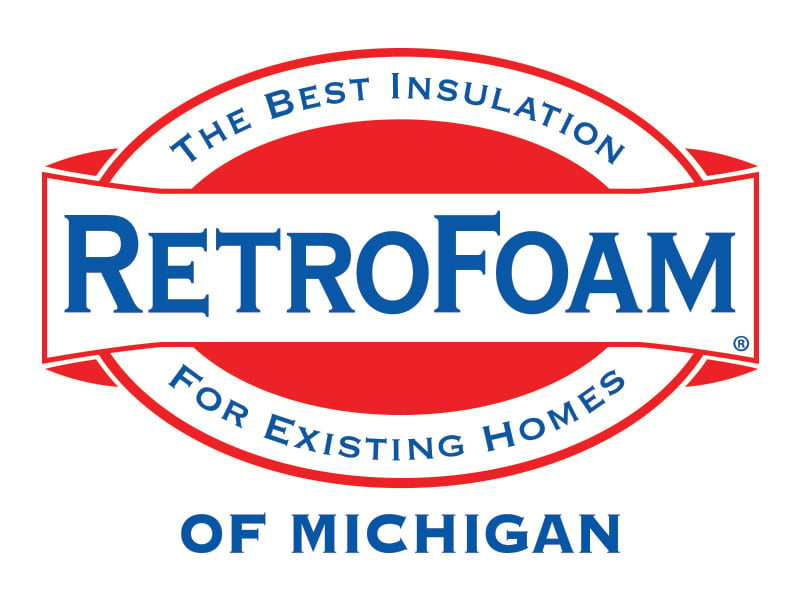How a Roof Rake for Snow Can Save Your Roof


Winter in Michigan transforms our homes into picturesque snow-covered scenes.
However, while the snow may look enchanting, it can pose significant risks to your roof's integrity. That snow can weigh up to 21 pounds per square foot, according to the Federal Emergency Management Agency (FEMA). Understanding the importance of snow removal and the proper use of a roof rake can help maintain your home's structural health.
Here at RetroFoam of Michigan, we specialize in foam insulation. While we can't do much about the snow piling up on your roof, we can tell you how to safely remove it. As an aside, if you notice your home developing ice dams, spray foam insulation can help with that, but I digress.
Let's jump right into how to rake snow off your roof.
What is a Roof Rake?
A roof rake is a long-handled tool designed to remove snow from your roof while you remain safely on the ground.
It typically features a wide blade made of plastic or aluminum and an extendable handle to reach various roof heights. Using a roof rake helps prevent the accumulation of heavy snow and ice, which can lead to structural damage or ice dams, according to House and Home Online.
Why Should You Rake Snow Off Your Roof?
Regularly removing snow from your roof is crucial for several reasons.
- Prevent Structural Damage: Excessive snow adds significant weight, potentially leading to stress, leaks, or even roof collapse.
- Avoid Ice Dams: Ice dams form when melting snow refreezes at the roof's edge, causing the potential for water to back up under shingles and into your home and some rather large icicles. Raking prevents the buildup that leads to these ice dams.
- Extend Roof Lifespan: Regular maintenance, including snow removal, helps prevent damage to shingles and gutters, prolonging your roof's life.
How to Use a Roof Rake for Snow Removal
Using a roof rake effectively and safely involves the following steps.
- Prepare Your Equipment: Ensure your roof rake is assembled correctly. Opt for models with telescoping handles to adjust the length as needed.
- Check for Hazards: Before starting, identify any obstacles like power lines or tree branches. Avoid contact with power lines to prevent accidents.
- Start at the Roof's Edge: Position yourself a safe distance from the house. Begin raking from the roof's edge, gently pulling snow downward in smooth strokes. Avoid pushing snow upward, as this can damage shingles.
- Work in Sections: Divide the roof into manageable sections. Remove enough snow to reduce weight, but leave a thin layer to protect shingles from potential rake damage.
- Avoid Overreaching: Use an extendable handle to reach higher areas without overextending yourself, maintaining balance and safety.
- Clear Your Gutters: After clearing the roof, ensure the gutters are free of snow and ice to facilitate proper drainage during thaws.
A Few Safety Tips
- Stay Grounded: Never climb onto your roof to remove snow. Standing on icy surfaces is hazardous. Use a roof rake with an extendable handle to work from the ground.
- Wear Protective Gear: Dress warmly and wear slip-resistant boots. Gloves and safety glasses can protect against falling snow and debris.
- Be Mindful of Falling Snow: Stand clear of areas where snow may fall and cause injury. Plan your raking pattern to control where the snow lands.
When is it Necessary to Rake Snow Off the Roof?
It's advisable to remove snow from your roof when accumulation reaches about six inches.
The specific amount of snow a roof can support depends on its type, age, and condition. Keep in mind that the more snow there is on the roof, the harder it will be to remove.
Choosing the Right Roof Rake
Selecting an appropriate roof rake enhances efficiency and safety.
Here's what to look for.
- Handle Length: Opt for a telescoping handle to accommodate different roof heights.
- Material: Lightweight materials like aluminum or durable plastic are easier to handle. Some rakes feature non-abrasive blades to protect shingles.
- Design Features: Rakes with wheels or rollers prevent damage to shingles or gutters. Angled blades can help reach tricky areas more easily.
Raking Snow From the Roof to Maintain its Health
Regularly raking snow off your roof is a simple yet effective way to protect your home during Michigan's harsh winters.
By understanding how to use a roof rake properly and following safety precautions, you can prevent structural damage, avoid ice dams, and extend the lifespan of your roof.
If you'd like to dig in a little deeper about how to prevent ice dams on your roof, check out the Learning Center on our website.
Related Articles
Does Spray Foam Insulation Prevent Ice Dams?
About Amanda Ringler
Amanda previously has worked as a breaking news and crime reporter, TV news producer, and editor in Flint and Detroit. Throughout her career as a journalist, she has won several awards from The Society of Professional Journalists - Detroit Chapter and the Michigan Press Association. As part of the RetroFoam of Michigan family, Amanda uses her experience as a journalist to write content that will help educate homeowners on the benefits of foam insulation. When Amanda isn’t writing, she’s spending time with her husband and rescued huskies. She also loves knitting, making art, cooking, and hosting dinner and a movie night for friends and family.

.jpg)
